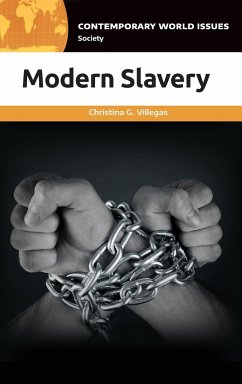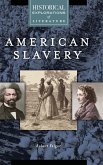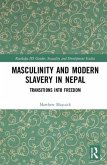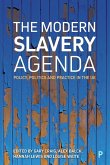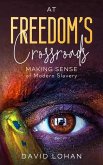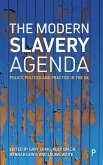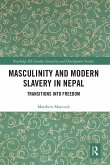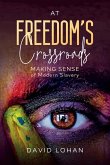Preface,
Acknowledgments,
1 Background and History,
Introduction,
Defining Modern Slavery,
Forced Labor,
Forced and Sham Marriages,
Key Moments,
Where Does Slavery Exist, and Who Is Affected?
Geographic Contexts,
Gender,
Contributing Factors,
Incompetent and Corrupt Systems of Public Justice,
Repressive Government,
War and Conflict,
Poverty and Discriminatory Social Hierarchies,
Migration,
Social Isolation and Homelessness,
Global Supply Chains,
Conclusion,
References,
2 Problems, Controversies, and Solutions,
Introduction,
Quantifying and Identifying Victims,
Barriers to Identification,
Identifying the Hidden Victims of Modern Slavery,
Competing Legal Approaches to Prostitution,
Enhancing Criminal Accountability,
Need for Renewed Attention on Developing Effective Public Justice Systems,
Common Challenges,
Usefulness of Task Forces and Partnerships,
Reducing Slavery in Supply Chains,
Voluntary Corporate Action,
Regulatory Mechanisms,
Reforming Labor Recruitment Practices,
Government Responsibility,
Empowering the Poor,
Rehabilitating Survivors,
The Role of U.S. Leadership,
Combating Slavery Locally,
Conclusion,
References,
3 Perspectives,
Introduction,
The Slavery Question in the Age of Moral Relativism: An American
Perspective from the Lincoln-Douglas Debates,
Joseph W. Bergee
A Single Medicine for Two Diseases? State Capacity as the Bulwark against
Terrorism and Human Trafficking,
Steven Childs
Modern Slavery and Open Borders,
Kevork Kazanjian
Child Labor Trafficking in the United States: A Hidden Form of Modern
Slavery,
Vicki Alger
Prostitution: Upholding Women's Rights as Human Rights with the Equality
Model,
Autumn Burris
The Role of the Church in Fighting Modern Slavery,
Peter C. Hodgson
Ending Child Sex Trafficking through Prevention,
Carl Ralston
4 Profiles,
Introduction,
A21,
American Anti-Slavery Group,
Anti-Slavery International,
California Against Slavery,
Christian Solidarity International,
CNN Freedom Project,
Coalition to Abolish Slavery and Trafficking,
DeliverFund,
ECPAT,
End It,
The Exodus Road,
The Frederick Douglass Family Initiatives,
Free the Slaves,
Freedom United,
Girls Not Brides,
Global Centurion,
Human Trafficking Institute,
Human Trafficking Legal Center,
International Cocoa Initiative,
International Justice Mission,
International Labour Organization,
International Organization for Migration,
KnowTheChain,
Korea Future Initiative,
La Strada International,
Liberty Shared,
Made in a Free World,
Not for Sale Campaign,
Operation Underground Railroad,
Polaris Project,
Remember Nhu,
Shared Hope International,
Thomas Reuters Foundation,
Transparentem,
U.S. State Department, Office to Monitor and Combat Trafficking in Persons,
Walk Free Foundation,
5 Data and Documents,
Introduction,
Data,
Figure 5.1 Regional Prevalence of Modern Slavery,
Figure 5.2 Forced Labor,
Figure 5.3 Forced Labor and Migration,
Figure 5.4 Sex Distribution of Victims of Forced Labor Exploitation, by
Sector of Economic Activity,
Figure 5.5 Percentage Distribution of Means of Coercion, by Sex,
Documents,
The International Slavery Convention (1926) (Excerpts),
The Universal Declaration of Human Rights (1948) (Excerpts),
United Nations Supplementary Convention on the Abolition of Slavery, the
Slave Trade, and Institutions and Practices Similar to Slavery (1956),
ILO Convention Concerning the Prohibition and Immediate Action for
Elimination of the Worst Forms of Child Labor (1999) (Excerpts),
Trafficking Victims Protection Act (2000) (Selections),
Protocol to Prevent, Suppress and Punish Trafficking in Persons, Especially
Women and Children, Supplementing the United Nations Convention against
Transnational Organized Crime (November 2000),
George W. Bush's Speech to the UN General Assembly (2003) (Selection),
Testimony of Gary Haugen to the United States Senate Committee on Foreign
Relations (2015),
"The National Nature of Human Trafficking: Strengthening Government
Responses and Dispelling Misperceptions," U.S. State Department
Trafficking in Persons Report (June 2019),
6 Resources,
Books,
Articles and Reports,
Nonprint Resources,
7 Chronology,
Glossary,
Index,

